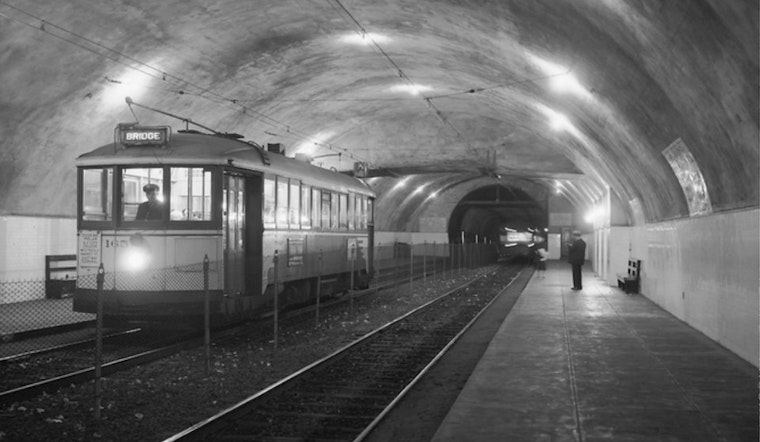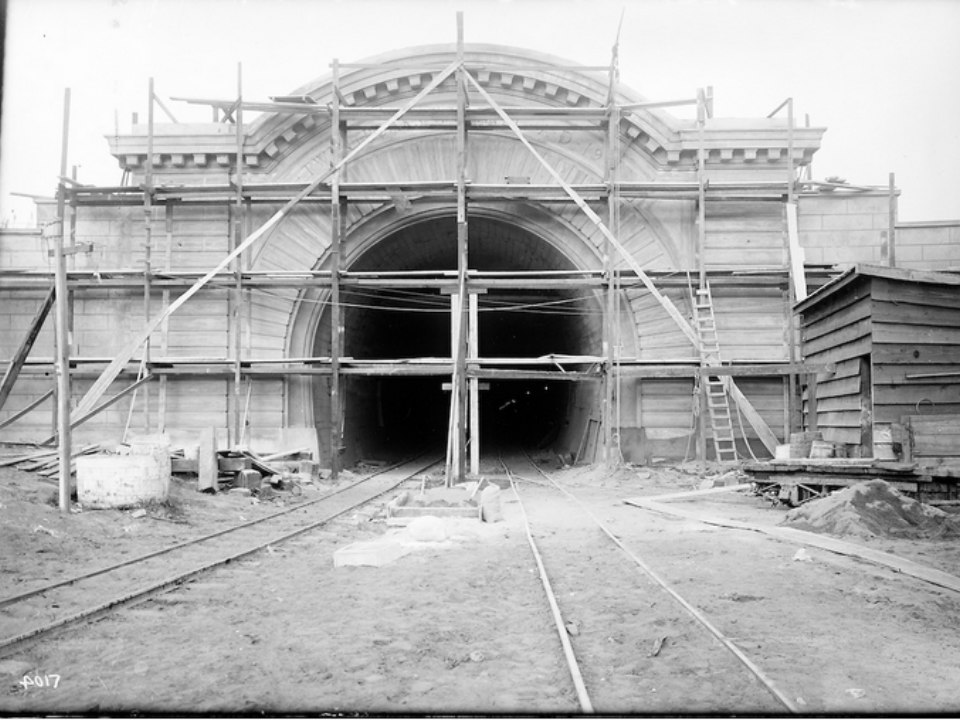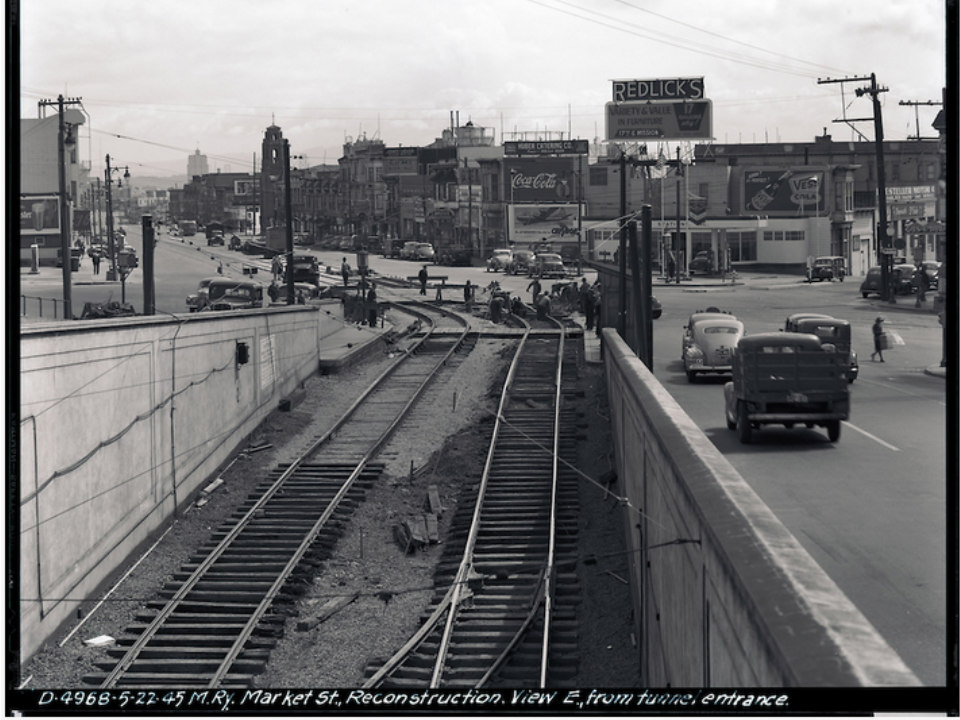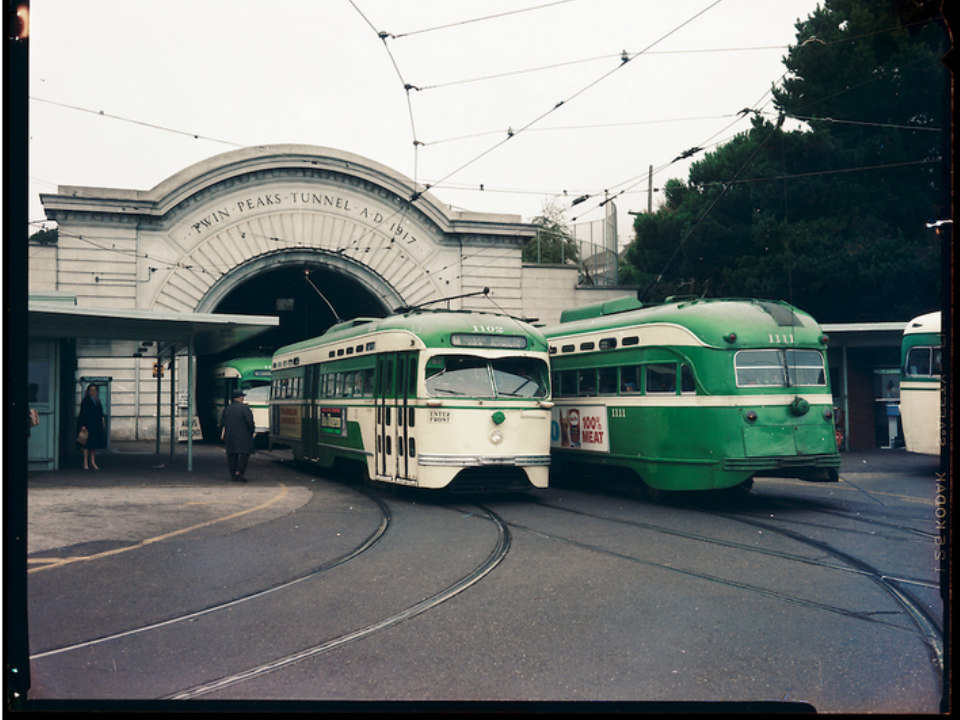
As we reported last December, Muni's Twin Peaks Tunnel Trackway Improvement Project is set to break ground this summer, and more details on the related closures are beginning to come to light. According to the SFMTA, the tunnel, which connects Castro and West Portal stations on the K, L, and M light-rail lines, will be closed on weekends beginning in mid- to late August, with construction continuing through the fall of 2017.
The main objectives of the construction are a seismic retrofit to improve stability, track improvements to increase train speed, and pipe replacements to ameliorate drainage. SFMTA recently announced that NTK Construction will head up the project; the company was the lowest bidder for the contract, at $32,965,750.

The 2.27-mile Twin Peaks Tunnel originally opened on February 3rd, 1918, and is one of the world's longest streetcar/light-rail tunnels. “In the nearly 100 years that the Twin Peaks Tunnel has been in operation, this will have been only the third time a full track replacement has taken place,” SFMTA said in a press release.
The work on the tunnel "is a needed maintenance to keep the Muni system in good working condition,” said SFMTA public relations officer Kelley McCoy. “The average lifespan of LRV tracks is about 50 years, and the [Twin Peaks] tracks are about 40 years old, last replaced in 1975. As the tracks age, they become more susceptible to wear and tear. The track replacement is preventative maintenance, in order to avoid potential future disruptions.”

With the improved tracks, Muni will be able to move faster. “There’s currently a speed restriction on trains moving through the tunnel,” said McCoy. “With the new tracks in place, trains will be able to travel faster through the tunnel, which will help improve on-time performance.”
The agency is hoping to avoid the delays that plagued similar work in the Sunset tunnel over the past two years. According to the SFMTA, NTK Construction has 21 weekends to complete the work within a 400-day span. “Significant cost clauses” are in the contract, McCoy said, and if the contractor fails to complete the tunnel work within the allotted time, the company will pay for it.

A large portion of the construction will involve strengthening the tunnel, to allow for increased stabilization during an earthquake. “The seismic upgrades will be at the original east portal of the Twin Peaks Tunnel: Eureka Valley station,” McCoy said. They include "adding concrete footings, adding steel columns and girders, strengthening column/girder connections, and adding fireproofing material to columns and girders.”
As for the tunnel’s current drainage system, SFMTA told us that the original drainage pipe that was installed in the tunnel in 1917 has collapsed in places, and needs to be replaced.

As with the Sunset Tunnel, Muni lines will cease to run through the Twin Peaks Tunnel on select weekends, coming to a halt late Friday night and resuming early Monday morning in time for the commuter rush.
“The construction will be done continuously on the weekends, with no phasing,” McCoy said. However, “there will be some weekends where work will be held due to a planned event," like Pride or a marathon. McCoy also added that no construction will happen during the holiday moratorium, between Thanksgiving and New Year’s Day.

During those weekend closures, above-ground bus shuttles will run in place of the trains, although the SFMTA is reportedly still working on its service plan for bus substitutions.
There will be no road closures during construction, but McCoy said staging areas will be set up on either side of the tunnel for the contractor’s use. “These area are necessary for the crews, so they have quick access to materials and equipment during construction.”
A major contributing factor to the delay on the Sunset tunnel was noise complaints from neighbors. Even with noise-control protocols in effect, construction was reportedly audible throughout weekends.
The same issues could potentially be a factor in the Twin Peaks Tunnel project. “Construction noise will be audible around the tunnel portals,” McCoy said. “There’s no way to entirely eliminate the construction noise, but we have in place a series of noise-reducing measures that will help minimize those noises throughout construction.”

To get that noise off your mind, take a moment to enjoy this silent film of the Twin Peaks tunnel's construction in 1917. Produced by a local real estate firm, it was designed to encourage settlement in the West Portal area.
According to SFMTA, more information about bus service during construction will be posted to the Twin Peaks Tunnel project's website once confirmed. We’ll update you later this summer on all the Muni station closures and bus shuttle details.









